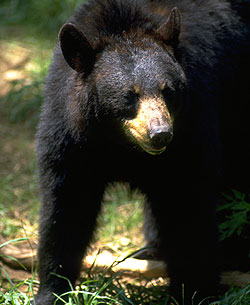November 04, 2010
By Dr. Dave Samuel
Black bears -- and black bear hunters -- are thriving across North America.
By Dr. Dave Samuel

Advertisement
|
Advertisement
While the antis continue to oppose bear hunts on all fronts and rave that hunting decimates black bear populations, statistics point to healthy numbers of black bears across North America. As I compiled information for Bowhunter's "2009 Bear Forecast," state and provincial biologists submitted data that add up to 469,000 black bears in Canada and 304,500 in the United States, not including Alaska's 200,000-plus bears.
Adding states that allow no bear hunting (Texas, Oklahoma, Missouri, Florida, and others), the total climbs to over a million black bears in the United States and Canada.
Now, lest you want to believe the anti bear hunters who continue to rail "No bear hunting!" under the guise that hunting threatens to wipe out black bears, consider that in 2008, hunters harvested 33,263 bears in the United States and 21,271 in Canada (excluding Newfoundland, New Brunswick, and Northwest Territories, which provided no harvest data). In short, hunters harvested about 55,000, or roughly five percent, of the total number of black bears in the U.S. and Canada. A five percent harvest is not a threat to any big game population. It is simply sound management.
In 17 states, biologists rate the bear population as "stable," and in 12, "growing." In eight provinces, biologists assess bear numbers as "stable," and in three, "growing." Biologists in 10 states forecast bear hunting as "excellent;" in 12, "very good;" and in 6, "good."
Biologists in three provinces forecast bear hunting as "excellent;" in four, "very good;" in three, "good;" and in one, "fair" (that last one is the Yukon, which has an estimated 10,000 black bears but virtually no bear hunters).
Even with this bright summary and outlook, a dwindling number of states offer spring bear seasons. Seven have spring and fall bear seasons, while 21 have fall-only seasons. In Canada, Nova Scotia and Ontario hold fall-only seasons, while nine provinces have both fall and spring seasons.
The dwindling number of spring seasons could be considered a negative, but here's a positive: bear numbers are growing in some states that have no bear hunting, and some of these are considering bear seasons. Oklahoma has taken steps to open a black bear season, while Kentucky, Nevada, and Texas have been looking at the possibility. I think at least three states will open new bear seasons in the next 10 years. I also predict that other states -- Louisiana comes to mind -- will give serious thought to bear hunting.
All of this points to the health of bear numbers and the great efforts state wildlife agencies have made to manage black bears. Yes, black bear management based on hunting is a great wildlife success story.
Still, all is not perfect, and politics continues to hamper bear management. Most notably, in New Jersey, even though nuisance-bear complaints have doubled over last year -- and even though nonlethal methods have proved ineffective in reducing complaints -- Governor Jon Corzine continues to support a prohibition on the hunting of black bears. Corzine backs the Department of Environmental Protection, which contends that better waste and garbage management alone will solve all the bear problems.
No one, including me, would argue against good waste-management practices, but that should not obscure the fact that bear numbers in parts of New Jersey have far surpassed the sociological carrying capacity, and citizen outrage is growing. It's nothing but a shame to force citizens to think of this magnificent species as a pest. Sooner or later, the powers that be in New Jersey are going to have to come to the sensible realization that hunting is the best way to manage bears. It can be done safely, and it would give the bears the respect they deserve.
To view the entire "2009 Bear Forecast" chart, which contains all the data behind the above summary, go to our website at www.bowhunter.com.

